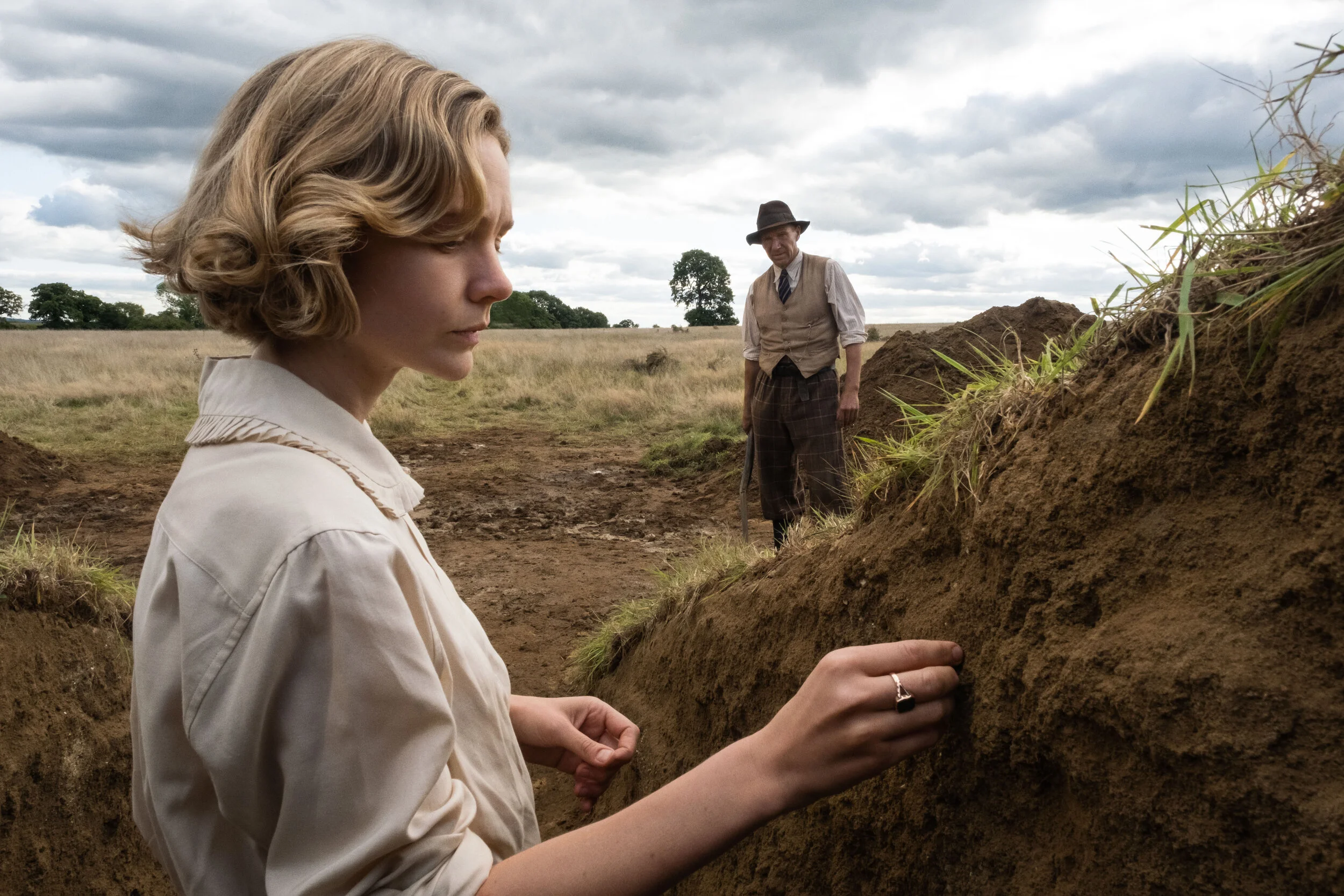Film Review: The Dig (2021)
The Dig (2021) Dir. Simon Stone © Netflix
Archaeology is not the most interesting of subjects. It’s hours of digging, knee-deep in dirt, hoping to find one tiny piece of evidence of those who came before us. On film, it is usually reduced to an afterthought, something already completed by the time Indiana Jones comes swooping in to rescue whatever treasure was dug up.
But there is something surreal about discovering evidence of past lives. There is something dreamlike about the people who came before us, who led us to where we are now with practically nothing but their wits. Kings, soldiers, saints, peasants. Any archaeologist can attest to the feeling of wonder – as can The Dig, released this month on Netflix.
The Dig (2021) Dir. Simon Stone © Netflix
Starring Carey Mulligan and Ralph Fiennes, The Dig tells the true story of Sutton Hoo, an English estate where, on the eve of World War II, one of the most important dig sites in English history was discovered. Based on the novel of the same name by John Preston, the film follows self-taught archaeologist Basil Brown (Fiennes) as he is hired by widow Edith Pretty, the owner of Sutton Hoo, to excavate large mounds on her land. In a turn of events about eighty years too late to be spoiled, the dig uncovers an Anglo-Saxon burial mound, which would become vital in historians’ understanding of the kingdom of East Anglia.
The Dig (2021) Dir. Simon Stone © Netflix
Now things get complicate as Edith’s nephew Rory Lomax (Johnny Flynn), a young RAF graduate and photographer comes to help. Stuart (Ben Chaplin) and Peggy (Lilly James) Piggot, a pair of newly wed archaeologists also arrive, and some locals are hired to do some of the digging. The work accelerates along with the urgency. When Peggy discovers a small gold object in the burial chamber Basil Brown is able to date the identify the boat as Saxon probably built in 624 and therefore pre-Viking. The site to continues to offer up thousands of marvelous treasures. In the meantime, Peggy and Stuart are drifting apart and Rory is facing imminent deployment. Edith is becoming weak and frail and discovers she has a bad heart. She tells no one.
The Dig (2021) Dir. Simon Stone © Netflix
“These people were not just marauding barterers,” proclaims Ken Stott’s Charles Phillips, “They had culture! They had art! They had money!”
It does not seem the kind of story fit for an Oscar-bait treatment - archaeology is slow, as is evidenced when Fiennes’s Brown shouts with excitement over a simple iron rivet. It’s a mess of bodies, not unlike the team of British Museum academics who floss the fields of Sutton Hoo when they realize the discovery is significant. But the film commits to its tale, and sees it through with shocking sincerity.
The Dig (2021) Dir. Simon Stone © Netflix
Some elements of the story, as always with adaptations, are warped for dramatic effect. Photographer Rory Lomax (Johnny Flynn) is entirely fictionalized, as is his romance with Lily James’s Peggy Piggott - replacing what could be deemed as vital work from real female photographers Mercie Lack and Barbara Wagstaff. Ages are flipped about like a spilled deck of cards, with Mulligan playing fifty-six-year old Pretty, and archaeologist Charles Phillips (thirty-eight at the time) played by Ken Stott, an actor well into his sixties. The majority of what was discovered at Sutton Hoo - including the famous Sutton Hoo helmet - is largely glossed over, despite its very real importance to English history.
But The Dig is gentle, where so many dramas deem sadness to be the right answer. It is more a tale of human endurance than an informative story on the Anglo-Saxons, a tale of hope and belief and the way we persist despite every obstacle at our fronts. With a sweeping score by Stefan Gregory and lush cinematography by Mike Eley, the film is nothing if not a joy to experience for a few hours, an escape back in time not unlike the experience of a real archaeology dig.












